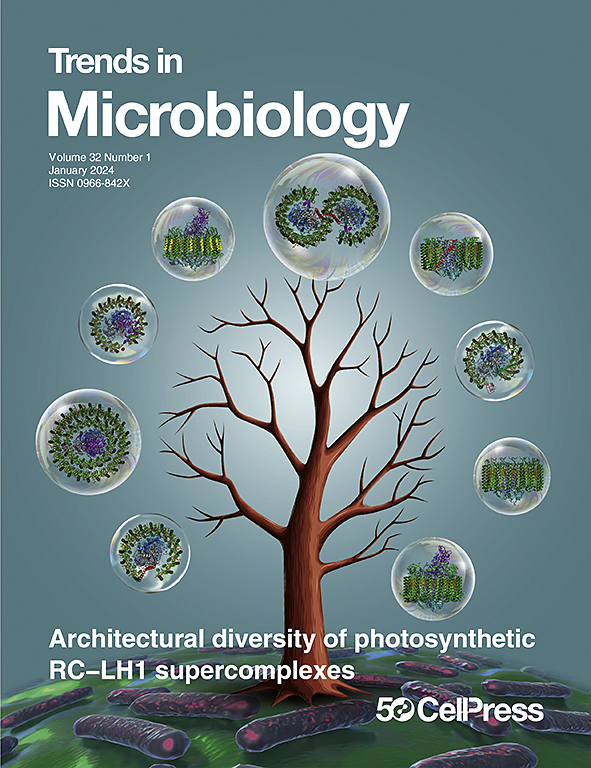微生物共生的菌种水平变化:来自曼达帕曼光杆菌系统的教训。
IF 14
1区 生物学
Q1 BIOCHEMISTRY & MOLECULAR BIOLOGY
引用次数: 0
摘要
siphaia - photobacterium mandapamensis共生是一种二元,肠道相关的互惠关系,是研究宿主-微生物相互作用中菌株水平变化的强大模型。它结合了高物种水平特异性和显著的菌株多样性,使其成为探索宿主选择性、微生物多样性以及微生物共生中驱动菌株水平动力学的更广泛机制的理想选择。本文章由计算机程序翻译,如有差异,请以英文原文为准。
Strain-level variation in microbial symbiosis: lessons from the Siphamia-Photobacterium mandapamensis system.
The Siphamia-Photobacterium mandapamensis symbiosis is a binary, gut-associated mutualism that serves as a powerful model for studying strain-level variation in host-microbe interactions. Its combination of high species-level specificity and significant strain diversity makes it ideal for exploring host selectivity, microbial diversity, and the broader mechanisms driving strain-level dynamics in microbial symbioses.
求助全文
通过发布文献求助,成功后即可免费获取论文全文。
去求助
来源期刊

Trends in Microbiology
生物-生化与分子生物学
CiteScore
25.30
自引率
0.60%
发文量
193
审稿时长
6-12 weeks
期刊介绍:
Trends in Microbiology serves as a comprehensive, multidisciplinary forum for discussing various aspects of microbiology, spanning cell biology, immunology, genetics, evolution, virology, bacteriology, protozoology, and mycology. In the rapidly evolving field of microbiology, technological advancements, especially in genome sequencing, impact prokaryote biology from pathogens to extremophiles, influencing developments in drugs, vaccines, and industrial enzyme research.
 求助内容:
求助内容: 应助结果提醒方式:
应助结果提醒方式:


